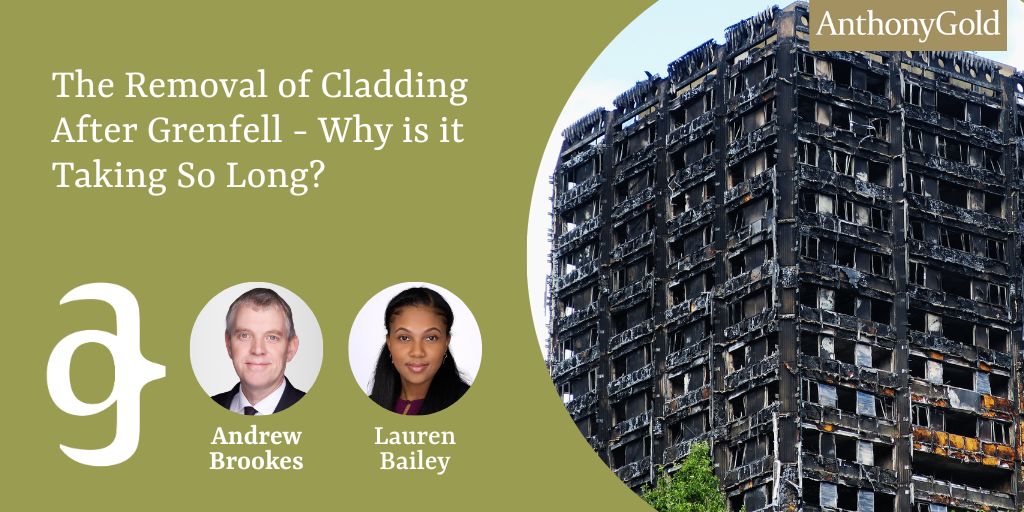The Removal of Cladding After Grenfell – Why is it Taking So Long?

It has been over seven years since the fire at Grenfell Tower and yet there are still dangerous cladding systems on buildings. As the recent fire in Dagenham in August 2024 shows, as long as dangerous cladding systems and other fire safety defects remain, residents will continue to be at risk. So, the question is, why is it taking so long to remove the cladding?
The Hackitt review and Phase One of the Grenfell Tower Inquiry led to changes in the law about building safety and cladding. The implementation of legislation such as the Building Safety Act 2022 was intended to ensure buildings were built safely. The Building Safety Act also gave leaseholders and the new Building Safety Regulator additional powers to act on unsafe buildings. So why are there still numerous buildings with cladding and other fire safety defects?
Liability
One of the main issues that causes delay is the issue of liability. There is often a battle between freeholders and developers about who is responsible for removing the cladding. This is because the person who is liable may have to pay the extensive remediation costs. No-one wants to take responsibility, and legal wrangling causes immense delays in starting remediation works, prolonging the potential risk to residents of the affected tower blocks.
The Building Safety Fund and the Cladding Safety Scheme
The current version of Building Safety Fund (BSF) was introduced in June 2020 for buildings over 18 metres in height. The BSF is intended to protect leaseholders from having to pay large bills by providing funding to fix fire safety problems. The Cladding Safety Scheme (CSS) began in July 2023 and expands funding for these fire safety problems to buildings between 11 metres and 18 metres in height.
Applications to the BSF and the CSS are complex and time consuming. There are multiple stages to the applications, and it can take 18 months or more before any works commence on a building. The works themselves can then take months or even years to complete.
Costs
The Building Safety Act brought in protections for leaseholders to prevent freeholders passing on the costs of the certain fire safety works to leaseholders as service charge. While this was welcomed by leaseholders, it can itself cause delays as freeholders work out what they can charge instead, and then look to others to fund the works.
What can be done?
Leaseholders and Resident Owned Management companies already have rights under the Building Safety Act to apply for a Remediation Order to require the speedy repair of building safety defects. The regulator can apply too. Building Safety Minister Rushanara Ali has set out expectations that the pace of remediating unsafe buildings should increase. Existing powers should be used more by government and made more easily accessible to leaseholders. The legislation should be improved by increasing funding and allowing leaseholders to recover their expenses of making an application. As we await the Phase Two report from the Grenfell Tower Inquiry on 4 September 2024, it will be interesting to see what further recommendations there will be to speed up the remediation of unsafe buildings.
* Disclaimer: The information on the Anthony Gold website is for general information only and reflects the position at the date of publication. It does not constitute legal advice and should not be treated as such. It is provided without any representations or warranties, express or implied.*

No comments